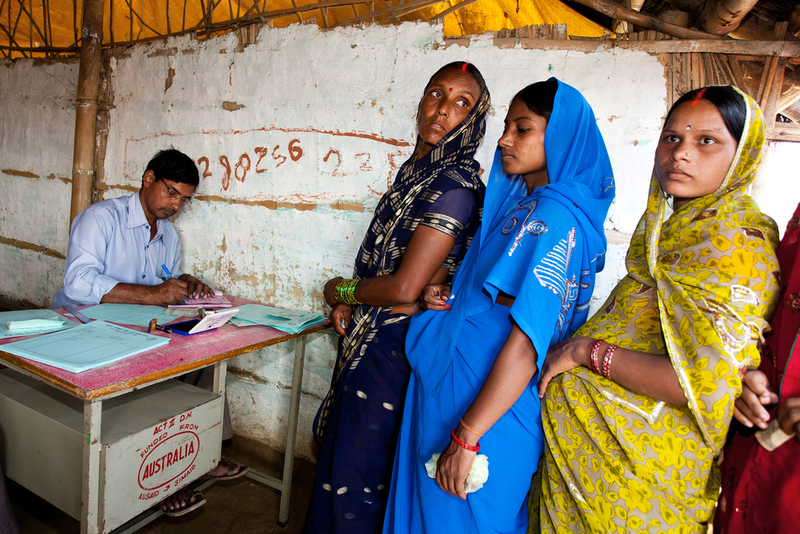Government wants to fix public healthcare staff shortages with AYUSH docs: Will it work?
Partner Content May 18, 2019
Though a large number of PHCs in the country are understaffed, the Indian Medical Association has openly opposed the move to bring AYUSH doctors into the system.

Those who go to a public healthcare centre may soon be treated by dentists and AYUSH practitioners. The Ministry of Health and Family Welfare had earlier announced its plan to introduce a training course for non allopathic practitioners, who would then be able to practice in public health centres (PHCs). This includes AYUSH caregivers (Ayurvedic, Yoga and Naturopathy, Unani, Siddha and Homeopathy). Now, the first batch of ayurvedic doctors to undertake this six-month ‘bridge course’ completed the program last month and may soon be integrated into the public healthcare system.
While it is true that a large number of PHCs in the country are understaffed, is this solution put forth by the MoHFW effectively addressing the issue or merely acting as a short term fix?
“Why is the government opting to implement such a course? Earlier it sought to make exit exams compulsory after medical education, they could also provide medicos with jobs so that there are no dearth of doctors. But to train Ayurvedic doctors and dentists to practice allopathic medicine is not the apt solution,” says Dr Sanjeev Singh, secretary of the Telangana branch of the Indian Medical Association (IMA). The organisation has rubbished claims by the Centre that introducing non-allopathic practitioners into the public healthcare infrastructure will help address the patient to doctor ratio.
The IMA has openly opposed the move and reportedly even threatened to hold a nationwide protest if the proposal was taken ahead.
While not all states have implemented a bridge course program, the Centre plans to include such a course throughout the country.
A backlog of doctors?
The problem at face value merely points to the lack of doctors in the PHCs, particularly in rural areas. As a result, unqualified practitioners end up providing medical services in these areas. Several have been outspoken about this issue. The Telangana Junior Doctors Association (TJUDA) had earlier condemned the inclusion of RMPs (Rural Medical Practitioners), who are unqualified ‘doctors’ who provide medical aid in rural areas.
But the IMA states that making the process less rigid for qualified doctors to obtain a job, it would solve a large chunk of the issue.
“If they are so keen on improving the current healthcare infrastructure, they should reassess the exit exam policy and induct more medical students into jobs upon completion of their medical degree. Instead they are bringing people who don’t hold the adequate qualifications and are rushing them through a six-month course and then intend to dispatch them to practice in public healthcare sectors. How can the two be viewed as the same?” adds Dr Sanjeev.
What do AYUSH practitioners feel?
While the IMA has presented its stance on behalf of allopathic practitioners, those who practice Indian systems of medicine (such as Ayurveda, Yoga and Naturopathy, Unani, Siddha and Homeopathy), feel that it would be beneficial to incorporate AYUSH practitioners into the public healthcare system.
“While there are several differences between the two forms of medical practice, at the heart of it, when we start out in our academic careers, we are taught the same basics,” says Dr Rakesh Nair, BAMS MD Ayurveda, who practices in Bengaluru’s AYURVAID Hospital.
Noting that the essential non-clinical subjects such as anatomy and physiology, which teach students about the normal functions of the human body, are the same for both branches of practice, he believes that the bridge courses will help improve the public healthcare system overall.
“Take CPR for instance. Training in CPR is given to anyone irrespective of their educational background. If you were to take someone from the AYUSH background, they would at least have the basic medical knowledge. So it would be extremely useful to have such a practitioner trained and deployed at a PHC,” he adds. He also notes that AYUSH practitioners while being incorporated into the public healthcare system would be trained in such measures, would still continue to practice non-allopathic care.
This story was originally published on The News Minute and is reprinted here with permission. It can be viewed on https://www.thenewsminute.com/article/govt-wants-fix-public-healthcare-staff-shortages-ayush-docs-will-it-work-101768
-
Exclusive Write-ups & Webinars by KOLs
-
Daily Quiz by specialty
-
Paid Market Research Surveys
-
Case discussions, News & Journals' summaries
